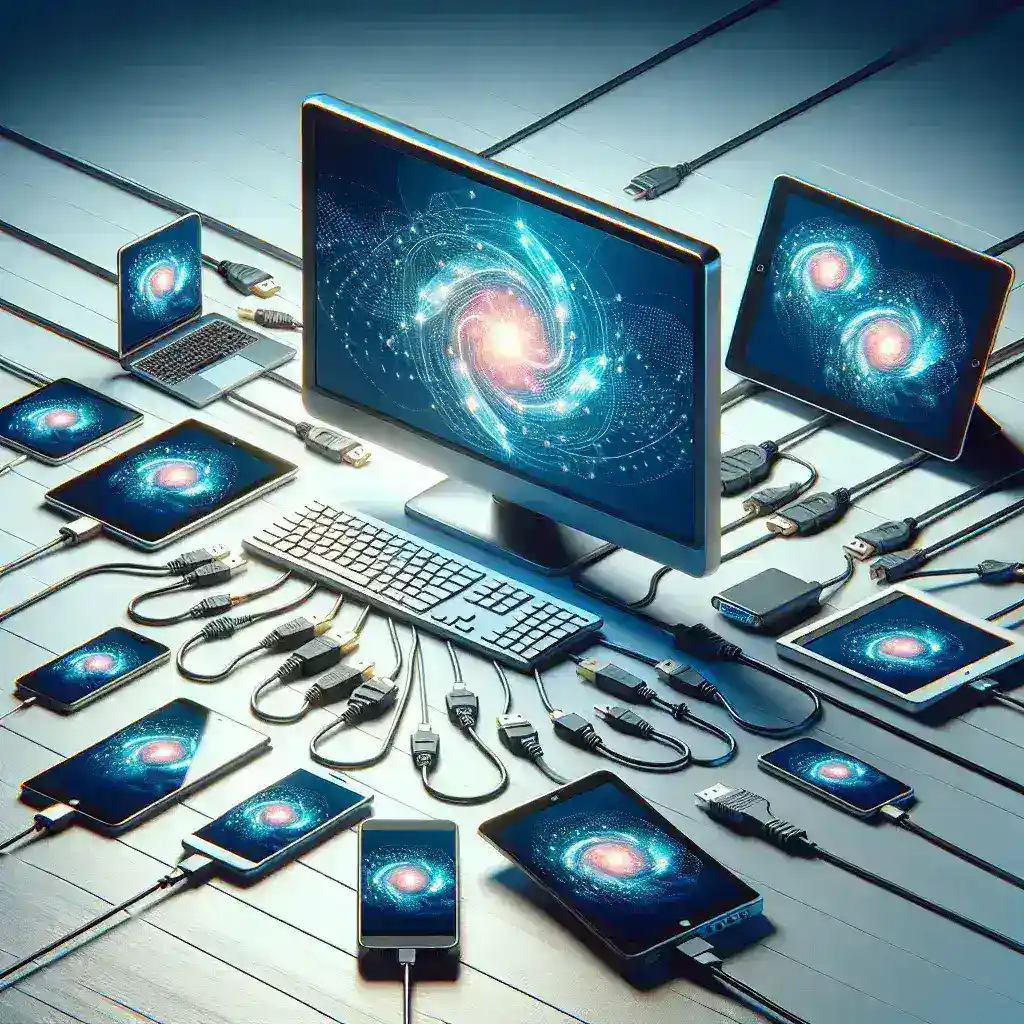How do I connect multiple devices to an LCD monitor?

The modern workplace and home entertainment systems often require connecting multiple devices to a single LCD monitor. Whether for enhancing productivity, creating an immersive gaming environment, or simply multitasking with ease, having the right setup is essential. This article will guide you through the steps to effectively connect multiple devices to an LCD monitor and the various accessories and techniques that can streamline this process.
Understanding Your LCD Monitor Ports
Before setting up multiple devices, it’s crucial to understand the ports available on your LCD monitor. Below is a table summarizing common ports and their typical uses:
| Port | Usage |
|---|---|
| HDMI | High-definition audio and video transmission; commonly used with computers, game consoles, and streaming devices. |
| DisplayPort | High-definition video and audio; typically used in professional and gaming setups. |
| VGA | Analog video transmission; often found on older laptops and desktop computers. |
| DVI | Digital video only; may require separate audio connections. |
| USB-C | Combines power, video, and data; common in modern devices like smartphones and laptops. |
Required Accessories for Multi-Device Connectivity
Several accessories can help you connect multiple devices to one LCD monitor seamlessly. Here are some essential accessories:
- HDMI Switch: Allows multiple HDMI devices to connect to a single HDMI port on your monitor.
- DisplayPort Hub: Multiple DisplayPort inputs can connect to one DisplayPort output on the monitor.
- USB-C Dock: For devices that use USB-C, docks allow multiple devices to connect through one USB-C port, often including power delivery and additional USB ports.
- KVM Switch (Keyboard, Video, Mouse): Enables control of multiple computers using one set of peripherals and a monitor.
Connecting Devices Using an HDMI Switch
An HDMI switch is a practical solution for people using multiple HDMI-enabled devices. Here’s how to set one up:
- Purchase an HDMI switch with sufficient input ports for your devices.
- Connect the HDMI switch output to your monitor’s HDMI port.
- Plug your devices into the HDMI switch’s input ports.
- Switch between devices using the buttons on the HDMI switch or a remote control, if available.
Using a DisplayPort Hub
If your devices and monitor support DisplayPort, a DisplayPort hub can be a clean and effective way to manage multiple devices:
- Buy a reputable DisplayPort hub suited for your needs.
- Connect the hub to your monitor’s DisplayPort input.
- Attach your devices to the hub’s DisplayPort inputs.
- Switch between connected devices as needed.
Utilizing a USB-C Dock
With the growing prevalence of USB-C, a suitable dock can simplify connections dramatically:
- Select a USB-C dock with enough ports and power delivery for your devices.
- Connect the dock to your monitor’s USB-C input.
- Attach your devices to the dock’s USB-C ports.
- Manage connected devices through the dock’s interface or monitor settings.
Employing a KVM Switch
A KVM switch is an ideal solution for users managing multiple computers with a single monitor, keyboard, and mouse setup:
- Choose a KVM switch that supports the number of computers you intend to manage.
- Connect your monitor, keyboard, and mouse to the KVM switch.
- Plug each computer into the KVM switch’s respective input ports.
- Switch control between computers using the KVM switch interface.
Software Solutions for Device Management
Software solutions can also play a significant role in managing multiple devices:
- Remote Desktop Applications: Enable one device to control another, useful for accessing files and applications remotely.
- Screen Mirroring Apps: Mirror your smartphone or tablet screen on your monitor, useful for presentations and entertainment.
Troubleshooting Common Issues
While setting up multiple devices with an LCD monitor, you may encounter some common issues:
- No Signal: Ensure all connections are secure and the correct input source is selected.
- Resolution Problems: Adjust the display settings on your devices to match your monitor’s capabilities.
- Audio Issues: Confirm that audio settings are correctly configured, especially if using DVI or VGA connections.
- Device Recognition: Ensure firmware and drivers for your accessories and devices are up-to-date.
Conclusion
Connecting multiple devices to an LCD monitor enhances productivity and entertainment experiences significantly. By understanding your monitor’s ports and using essential accessories like HDMI switches, DisplayPort hubs, USB-C docks, and KVM switches, you can create an efficient and streamlined setup. Pair these hardware solutions with software tools to manage devices effectively, and you’ll ensure a seamless, multi-device experience.
